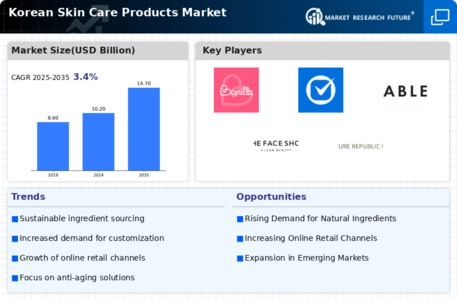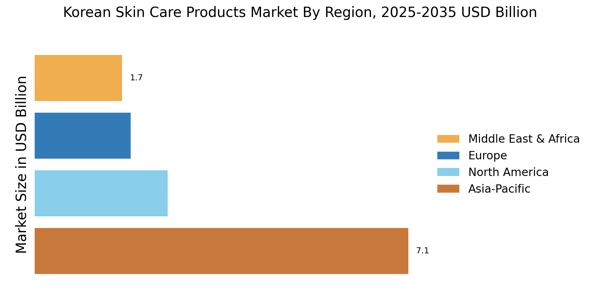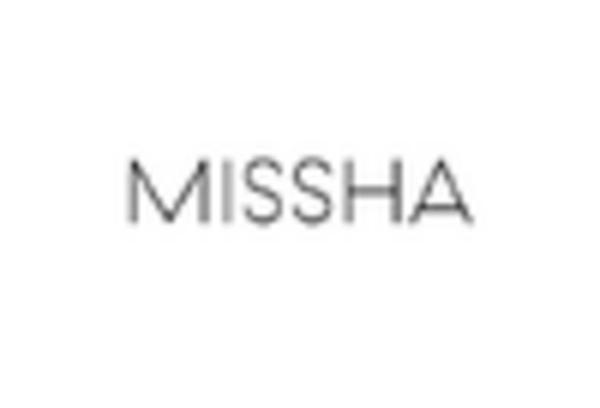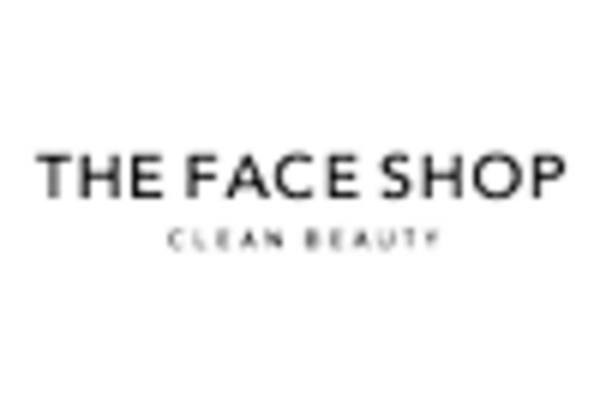Influence of K-Beauty Culture
The Korean Skin Care Products Market is significantly shaped by the global fascination with K-beauty culture. This phenomenon has transcended borders, with consumers worldwide eager to adopt the multi-step skincare routines popularized by South Korean beauty influencers. The proliferation of social media platforms has facilitated the rapid dissemination of K-beauty trends, leading to a surge in demand for products that promise radiant skin. Market data suggests that the K-beauty segment has experienced a growth rate of approximately 20% annually, driven by the allure of innovative formulations and unique packaging. As consumers increasingly seek out authentic K-beauty products, brands that effectively leverage this cultural influence are poised to thrive. The ongoing interest in K-beauty not only enhances brand visibility but also fosters consumer loyalty, thereby solidifying the market's growth trajectory.
Rising Awareness of Skin Health
The Korean Skin Care Products Market is experiencing a surge in consumer awareness regarding skin health and wellness. This heightened consciousness is prompting individuals to invest in skincare routines that prioritize long-term skin health rather than merely cosmetic benefits. Educational campaigns and influencer endorsements are playing a pivotal role in disseminating information about the importance of skincare, leading to increased product adoption. Market Research Future indicates that consumers are willing to spend up to 30% more on products that are perceived as beneficial for skin health. This trend is particularly evident among younger demographics, who are increasingly proactive about skincare. As awareness continues to grow, brands that emphasize the health benefits of their products are likely to capture a larger share of the market, thereby driving overall industry growth.
Sustainability as a Market Imperative
The Korean Skin Care Products Market is increasingly aligning with sustainability principles, reflecting a broader consumer demand for environmentally responsible practices. Brands are adopting eco-friendly packaging, reducing carbon footprints, and sourcing ingredients sustainably. This shift is not merely a trend; it is becoming a market imperative as consumers, particularly millennials and Gen Z, prioritize sustainability in their purchasing decisions. Data suggests that nearly 70% of consumers are more likely to purchase from brands that demonstrate a commitment to environmental stewardship. As a result, companies that integrate sustainable practices into their operations are likely to enhance their brand reputation and customer loyalty. The emphasis on sustainability is expected to drive innovation within the Korean Skin Care Products Market, leading to the development of new products that meet both consumer expectations and regulatory standards.
Technological Advancements in Skincare
The Korean Skin Care Products Market is at the forefront of technological innovation, which is reshaping product development and consumer engagement. Advancements such as AI-driven skin analysis tools and augmented reality applications are enhancing the shopping experience, allowing consumers to make informed choices. Furthermore, the integration of biotechnology in product formulation is leading to the creation of highly effective skincare solutions. For instance, brands are utilizing fermentation technology to enhance ingredient efficacy, a practice rooted in traditional Korean skincare. This technological evolution is not only attracting tech-savvy consumers but also driving sales, with the market projected to grow by 15% over the next five years. As the industry continues to embrace innovation, it is likely to see an influx of new products that cater to diverse skin types and concerns.
Increasing Demand for Natural Ingredients
The Korean Skin Care Products Market is witnessing a pronounced shift towards natural and organic ingredients. Consumers are increasingly discerning, favoring products that boast transparency in their ingredient lists. This trend is underscored by a report indicating that over 60% of consumers prioritize natural formulations. The demand for clean beauty products is not merely a passing fad; it reflects a broader societal movement towards health-conscious living. As a result, brands within the Korean Skin Care Products Market are reformulating existing products and launching new lines that emphasize botanical extracts and eco-friendly components. This shift not only caters to consumer preferences but also aligns with regulatory trends favoring safer, non-toxic ingredients. Consequently, companies that adapt to this demand are likely to gain a competitive edge in the market.


















Leave a Comment